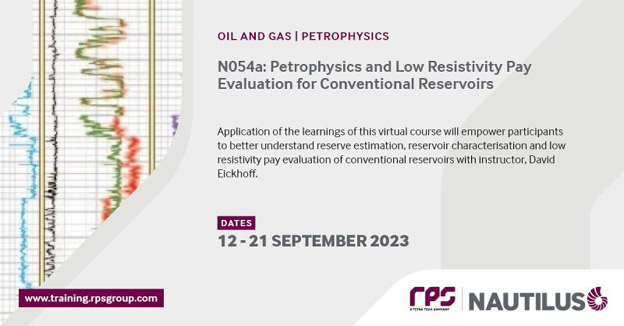
Date: 12th - 21st Sep 2023
Start Time: 14:00 BST
Tutor: David Eickhoff
Petrophysics and Low Resistivity Pay Evaluation for Conventional Reservoirs will be taking place in virtual format over 6 sessions with instructor David Eickhoff.
Business Impact: Application of the learnings of this course will empower participants to better understand reserve estimation, reservoir characterization and low resistivity pay evaluation of conventional reservoirs.
This petrophysics course explains the physical properties of rocks and their constituent fluids, how their properties are measured and how this information is used in reserve estimation and reservoir characterization of conventional reservoirs. Particular emphasis is given to the interactions between rock and fluid volumes which are explained and then illustrated with real examples. The course explores some of the newer generation tools and methods used in formation evaluation for interpretation of low resistivity pay. The class consists of both lectures and exercises which are demonstrated with petrophysical software.
This is a classroom or virtual classroom course comprising a mixture of lectures, short exercise-based discussions, and log based interpretation exercises demonstrated with petrophysical software.
Participants will learn to:
- Evaluate through logs and core the key petrophysical properties such as lithology, porosity, Archie parameters, water saturation, permeability and net to gross.
- Generate a comprehensive petrophysical evaluation of a drilled section using an appropriate workflow to integrate available petrophysical data from logs and core.
- Assess the different modes of shale distribution, estimate shale volume from logs, appraise the different shaly sand interpretation models and understand the difference between effective and total porosity.
- Identify and estimate hydrocarbon reserves in a thinly bedded, low resistivity sand/shale sequence using industry crossplot methods and resistivity anisotropy principles.
- Judge the advantages and limitations of nuclear magnetic resonance measurements for porosity, saturation and permeability.
- Develop a permeability model from nuclear magnetic resonance data by calibrating industry relationships to core data.
- Assess the different rock typing methods and develop a saturation-height model of a heterogeneous reservoir using capillary pressure data and J-functions.
- Consider the primary causes of Low Resistivity Pay and recommend the appropriate tools and measurements for evaluation.
Full details l KeyFacts Energy Industry Directory: RPS Energy l KeyFacts Energy news: Training
 KEYFACT Energy
KEYFACT Energy